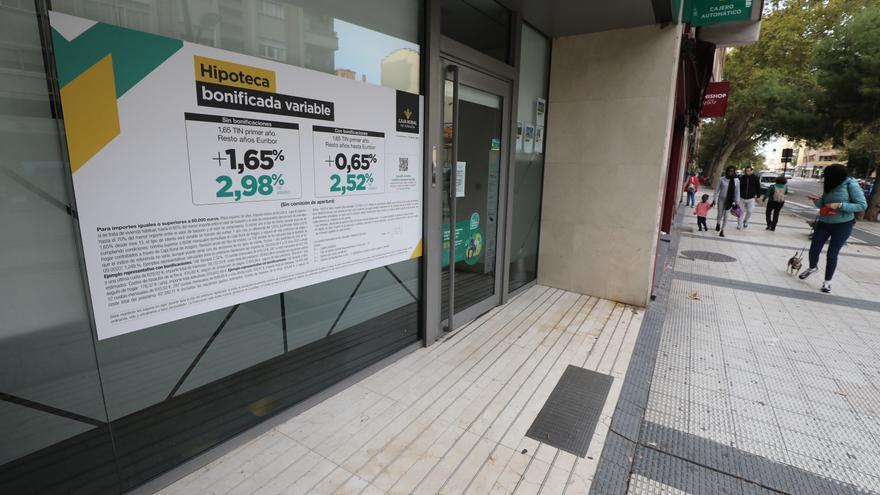These are headache times for mortgage holders. The decision of central banks to fight inflation by making the price of money more expensive, i.e. by raising the interest ratesit has a direct impact on those who take out loans with variable cost financial institutions. After years of negative rates (with borrowing practically free), those with mortgages are seeing their monthly payments start to skyrocket, which is why many have rushed to consult their offices for fixed-rate mortgages. However, these have also increased, with interest rates as high as 3 and 4%. So now, after having been the ugly duckling of the real estate market for years, the mixed-rate mortgage appears, which is positioned as one of the most attractive options by establishing a period of time in which a fixed price is paid and others in which it is paid according to the reference rate. In any case, a new headache.
«There are many bank users who want to change the type of their own mutual. We are seeing the largest interest rate hike in 40 years, which was very rapid and went from -0.5% to 2.6% in less than a year. It has destabilized many household economies and the mortgaged person seeks a change in the terms of his loan. Obviously the demand has cooled down, although we don’t know if it is something temporary due to uncertainty or if it will be supported by the escalation of rates, ”says Verónica Rodríguez, communications manager of the Association of Financial Users (Asufin) .
The increase in interest rates has been very pronounced and accelerated. The euribor It is now close to 3%, which the experts consulted consider “reasonable” ground if one looks at the historical series. “Money has always cost money and free loans have been something exceptional in recent years,” explains Fernando Baena, president of the Official College of Real Estate Agents of Aragon.
Given the uncertainty that characterizes the household economy, many customers are opting for the intermediate option. “Los customers They are finding the optimal solution in mixed-rate mortgages. Through them they can guarantee a very attractive fixed rate for 5 or 10 years and then switch to a variable rate with the expectation of greater stability. in interest rates and usually coincides with a positive evolution of salaries. For example, in October the amount formalized at a mixed rate has already reached 25%, whereas in the first months of 2022 and, above all, in previous years, this percentage was very residual”, explains Víctor Royo, head of Ibercaja Strategy commercial.
From Caja Rural de Aragón, on the other hand, points out that around 80% of the new mortgages formalized in 2022 were set up at a fixed rate. However, they also point out that “in recent weeks, in Caja Rural, clients have shown interest in our competitive mixed-rate mortgages.”
Extra cost of 100 euros
To give figures in this regard, one can take, for example, a 100,000 euro mortgage for the purchase of a house. In January of this year, those who had taken out a loan with variable conditions paid a monthly installment of 373 EURwhile those who opted for the fixed rate paid 387 euros. However, the conditions have changed if the loan is signed now, in November: Anyone who subscribes to a fixed rate at this time will pay 471 euros; Those who opt for the variable rate will pay 523 euros per month.
The dilemma is that these future loans are conditioned by the evolution of the financial market. Accepting a fixed-rate mortgage at such a high price does not attract customers, given that only 11 months ago they were paying almost 100 euros less. The variable option is significantly more expensive, but rates may drop again in a few years… Or not. «The Euribor was supposed to reach 3% at the end of 2023, but we had to bring the forecast forward by a year and we will certainly close 2022 with rates at 3%. Surely a high Euribor awaits us in 2023”, Asufin points out.
“Banking entities are making the fixed rate very difficult, which has led to fewer loans of this type being signed since the summer,” says Carlos Alonso, head of Tecnocasa in Zaragoza, which exemplifies the 182 mortgage loans that this agency real estate has formalized until November. «Until 31 July, 100% of the signatures had been executed at a fixed rate. However, in August 36% of variable rate mortgages had already been signed, while in September and October they are already at 70%”, continues Alonso. The cause of this change is that banks have opted to promote variable mortgages with large offers and setting the highest fixed rates, close to 4% in some cases, which frightens many buyers when they see themselves paying very high figures for 30 years above. the one referenced in recent years.
Aragon has nearly 120,000 households with active mortgages, an approximate figure obtained by dividing the total farm loans recorded by the Bank of Spain in the country (5.5 million) by Aragon’s contribution to national GDP (3 %). However, according to Asufin’s indications, in the first seven months of the year, Aragon was the community where the fewest new mortgages were signed, with just 7,000 loans.


